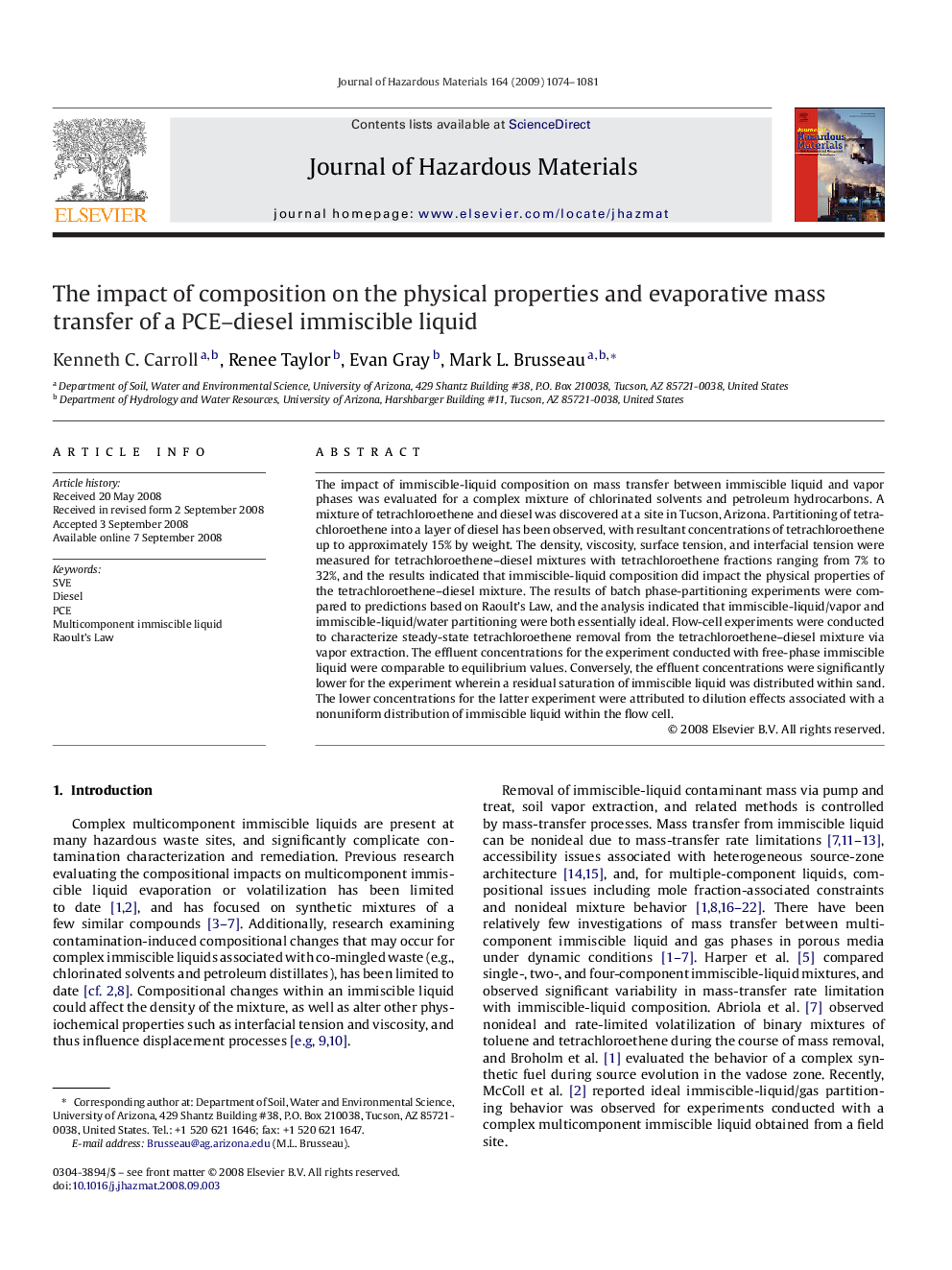| Article ID | Journal | Published Year | Pages | File Type |
|---|---|---|---|---|
| 582534 | Journal of Hazardous Materials | 2009 | 8 Pages |
Abstract
The impact of immiscible-liquid composition on mass transfer between immiscible liquid and vapor phases was evaluated for a complex mixture of chlorinated solvents and petroleum hydrocarbons. A mixture of tetrachloroethene and diesel was discovered at a site in Tucson, Arizona. Partitioning of tetrachloroethene into a layer of diesel has been observed, with resultant concentrations of tetrachloroethene up to approximately 15% by weight. The density, viscosity, surface tension, and interfacial tension were measured for tetrachloroethene-diesel mixtures with tetrachloroethene fractions ranging from 7% to 32%, and the results indicated that immiscible-liquid composition did impact the physical properties of the tetrachloroethene-diesel mixture. The results of batch phase-partitioning experiments were compared to predictions based on Raoult's Law, and the analysis indicated that immiscible-liquid/vapor and immiscible-liquid/water partitioning were both essentially ideal. Flow-cell experiments were conducted to characterize steady-state tetrachloroethene removal from the tetrachloroethene-diesel mixture via vapor extraction. The effluent concentrations for the experiment conducted with free-phase immiscible liquid were comparable to equilibrium values. Conversely, the effluent concentrations were significantly lower for the experiment wherein a residual saturation of immiscible liquid was distributed within sand. The lower concentrations for the latter experiment were attributed to dilution effects associated with a nonuniform distribution of immiscible liquid within the flow cell.
Related Topics
Physical Sciences and Engineering
Chemical Engineering
Chemical Health and Safety
Authors
Kenneth C. Carroll, Renee Taylor, Evan Gray, Mark L. Brusseau,
